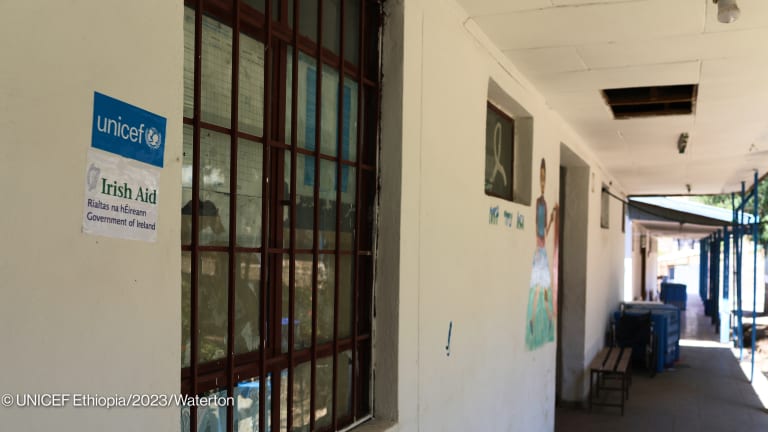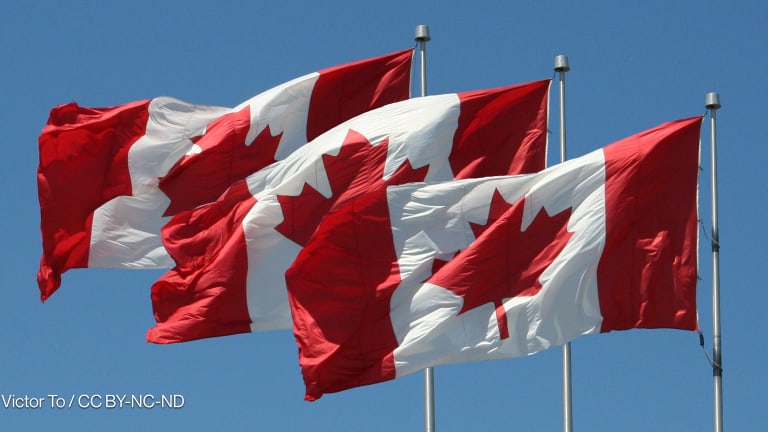Ukraine war triggers record aid levels, and fresh criticism for OECD
Aid to Ukraine jumped to $16.1 billion last year, up from $918 million in 2021.
The Organisation for Economic Co-operation and Development has defended its wealthy member countries’ aid efforts after development assistance spent on hosting refugees at home and helping Ukraine soared last year, while bilateral support to Africa and least-developed countries decreased. NGOs and commentators expressed alarm at preliminary data released Wednesday by the OECD’s Development Assistance Committee. Oxfam called it “obscene” and a “farce” that leading donors could report $29.3 billion or 14.4% of their combined official development assistance as in-donor refugee costs — certain expenses incurred assisting refugees living inside their own borders, which countries may count toward their ODA under some conditions. That’s up from $12.8 billion in 2021. The previous peak for in-donor refugee costs in 2016, amid the war in Syria, was $16 billion, or 11% of total ODA at the time. Many donors reported steep increases in aid in 2022, though once spending on refugees at home was subtracted, several, including the United Kingdom, Italy, Sweden, and Denmark spent less than the year before. At the same time, DAC countries’ bilateral aid to Africa fell 7.4% year-on-year to $34 billion. And some $29 billion of that amount went to sub-Saharan Africa, a 7.8% decrease. Bilateral aid to least-developed countries also dropped 0.7% to $32 billion — though this was a 9% increase compared to 2019. Overall, the DAC, whose members include the United States, Germany, and European Union institutions, counted $204 billion in ODA last year. That all-time high represents 0.36% of donors’ gross national income, up from 0.33%, or $186 billion in 2021. Still, one official from a DAC member, speaking on condition of anonymity, told Devex that it was “quite disturbing to see how ODA is easily found for more politically inspired support and not for the other ongoing crises.” Under the pressure Asked at a press briefing Wednesday whether 2022 had been a positive year for ODA, Mathias Cormann, the OECD secretary-general, said that despite “significant” pressure to respond to the Ukraine crisis in the short term, the latest figures showed that this “overwhelmingly has not come at the expense of official development assistance elsewhere — that it has been overwhelmingly additional support.” Not counting in-donor refugee costs, ODA last year was still up 4.6% on the year before. However, the full picture is yet to emerge. “Net bilateral ODA for programmes and projects and technical assistance (excluding in-donor refugees and humanitarian aid) rose by 12.7% in real terms,” the OECD reported Wednesday, “some of that driven by special assistance to Ukraine.” Asked exactly how much of that 12.7% increase was attributable to Ukraine, an OECD spokesperson clarified by email: “We do not have the full details for bilateral ODA for programmes, projects and technical cooperation, which will be available later in the year. Given that assistance to Ukraine is cross-cutting, as it is also included under humanitarian aid, we will need to wait for the detailed data at the end of the year to respond to this question.” In addition to the increase in in-donor refugee costs, OECD reported Wednesday that aid to Ukraine leapt to $16.1 billion, up from $918 million in 2021. Trust us, we’re donors Nerea Craviotto, senior policy and advocacy officer at the European Network on Debt and Development, or Eurodad, said in a statement that Wednesday’s figures were “nothing to celebrate” and that much more funding was needed to meet the various polycrises facing low-income countries around the world. The European NGO confederation CONCORD pointed out that countries such as Slovakia and Belgium had partially excluded refugee costs from their reporting. “While any and all refugee costs should come from new and additional funding - as in Luxembourg, for example - some [countries] are showing that things can be done differently,” Salvatore Nocerino, the policy and advocacy adviser at CONCORD, said in a statement. Aid advocates have long decried so-called inflated aid, citing not just refugee hosting costs, but also donors counting the donation of excess vaccines initially purchased for their own citizens’ use. Of the $1.53 billion in vaccines claimed as ODA last year, just $16 million were for doses specifically purchased for least-developed countries. While Steve Cutts, a former assistant secretary-general at the United Nations and former chef de cabinet at OECD, has been among those arguing that the latest method for calculating the grant element of loans overstates donors’ efforts. Adding his misgivings about counting in-donor refugee costs as ODA, Cutts repeated his call in an email to Devex Wednesday for the DAC “to be stripped of its responsibilities for defining and counting ODA, and the task passed to a robust body of politically independent statisticians.” Asked by Devex at the press briefing whether the latest numbers called into question the credibility of ODA, Carsten Staur, the new chair of the DAC, said he did not believe trust in the concept was being eroded. Caring for refugees should be considered ODA whether it happens in a refugee camp in Somalia or, for a limited time, in a donor’s own country, the Dane argued. Staur said there was no need to reopen the 2017 rules on how to count in-donor refugee costs and he predicted that provided there are no new inflows of refugees from Ukraine or elsewhere, and provided donors take a “conservative” approach to reporting, the numbers would go down again. “Then the important thing will be, hopefully, [having] donors maintaining their level of assistance, and then also directing it from shorter-term challenges, shorter-term costs — like in-donor [refugee costs], like Ukraine emergency assistance, like COVID-19 — into longer-term development,” Staur said. “I think that is the challenge right now for the donor community and that's where we should focus our attention for this year and next year.”
The Organisation for Economic Co-operation and Development has defended its wealthy member countries’ aid efforts after development assistance spent on hosting refugees at home and helping Ukraine soared last year, while bilateral support to Africa and least-developed countries decreased.
NGOs and commentators expressed alarm at preliminary data released Wednesday by the OECD’s Development Assistance Committee. Oxfam called it “obscene” and a “farce” that leading donors could report $29.3 billion or 14.4% of their combined official development assistance as in-donor refugee costs — certain expenses incurred assisting refugees living inside their own borders, which countries may count toward their ODA under some conditions.
That’s up from $12.8 billion in 2021. The previous peak for in-donor refugee costs in 2016, amid the war in Syria, was $16 billion, or 11% of total ODA at the time.
This article is free to read - just register or sign in
Access news, newsletters, events and more.
Join usSign inPrinting articles to share with others is a breach of our terms and conditions and copyright policy. Please use the sharing options on the left side of the article. Devex Pro members may share up to 10 articles per month using the Pro share tool ( ).
Vince Chadwick is a contributing reporter at Devex. A law graduate from Melbourne, Australia, he was social affairs reporter for The Age newspaper, before covering breaking news, the arts, and public policy across Europe, including as a reporter and editor at POLITICO Europe. He was long-listed for International Journalist of the Year at the 2023 One World Media Awards.








